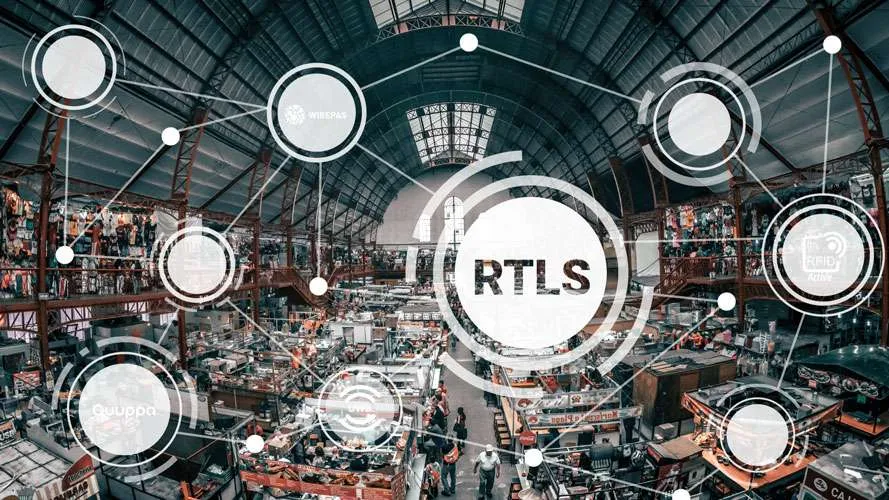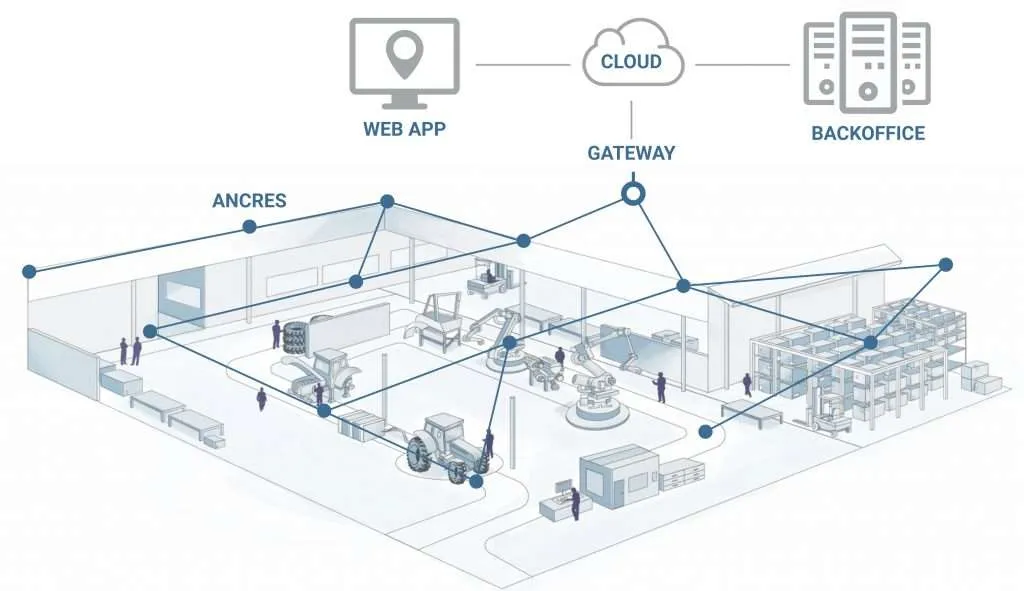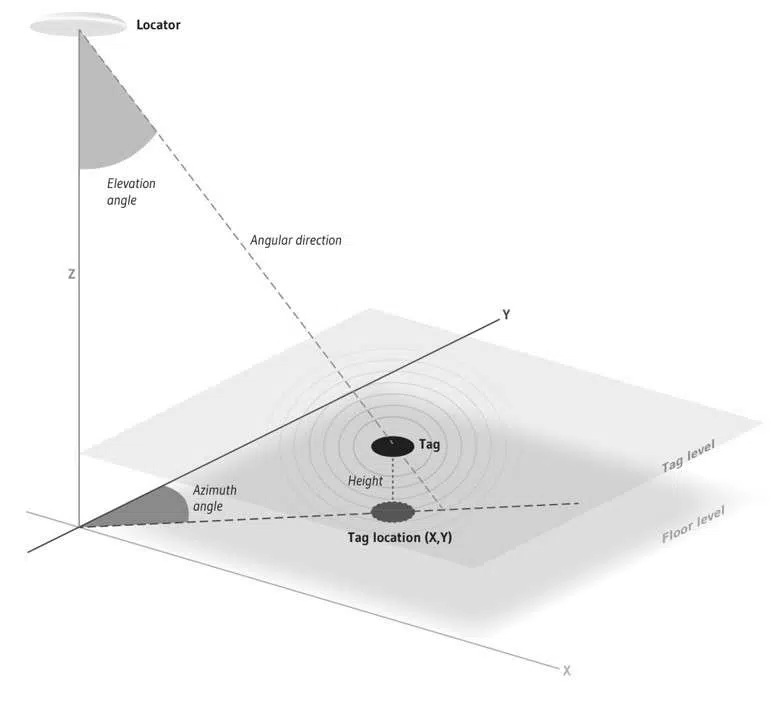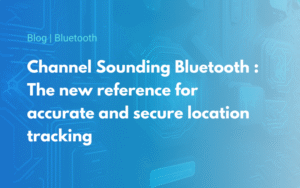
We are all familiar with outdoor geolocation technologies such as satellite positioning (GPS, etc.), but today companies are looking for indoor positioning solutions that provide an accurate position for objects or people. However, the radio signals emitted by satellites have difficulty penetrating walls and obstacles.
To meet this growing demand and its specific requirements, manufacturers in the IIoT (Industrial Internet of Things) market are tending to offer increasingly high-performance indoor positioning systems (IPS). Many of these solutions are based on existing technologies, but the addition of innovative software building blocks means that indoor positioning systems are becoming increasingly accurate.
IPS use positioning approaches that vary widely in terms of accuracy, cost, scalability, robustness and security. To help you choose the solution best suited to your needs, here are a few relevant criteria relating to indoor location systems: location accuracy, coverage and resolution, position refresh time, infrastructure costs and the errors inherent in the type of technology used.
In order to better understand the difference between these indoor localization technologies, we suggest you start by studying the different physical principles involved.
The physical principles of positioning are classified into 5 categories
To calculate the location of an object or person, the algorithms extract position data from the radio signals circulating between the reference nodes (fixed and known position), which serve as a reference for locating the mobile nodes. However, not all algorithms use the same physical principles. We can classify them into 5 main categories:
- Time of arrival (TOA)
- Angle of arrival (AoA)
- Time difference on arrival (TDOA)
- Received signal strength (RSSI)
- Hybrid systems (a mix of several measurements linked to different physical principles)
Now that you know what criteria need to be taken into account and have the various physical principles of location in mind, we’d like to take a closer look at 4 indoor location technologies.
Bluetooth Low Energy (BLE), for simple, accessible indoor location
La technologie Bluetooth Low Energy (BLE) repose sur un protocole de communication sans fil à faible consommation d’énergie, permettant une localisation indoor économique et facilement déployable. BLE est largement utilisé pour suivre la position des objets ou des personnes via des balises (beacons) qui émettent un signal régulièrement. Ces balises, généralement très petites et peu coûteuses, peuvent être installées sur des équipements ou portées par des individus.
BLE is based on receiver antennas that pick up the signal emitted by the beacons and, depending on the strength of the signal received (RSSI), estimate the position of the beacons in space. What’s more, BLE is compatible with a wide variety of mobile devices, making it easy to integrate into solutions for managing equipment fleets or locating personnel in real time.
Benefits
- Low acquisition cost
- Easy to install, little infrastructure required
- Long battery life, with some products lasting up to 20 years
- Interoperability with new IoT devices and systems
Cons
- Requires regular calibration for optimum positioning results
Localization based on the intensity of signals received (RSSI) in a Mesh network
The purpose of a mesh network is to network a large number of connected objects using a very simple infrastructure that does not require a central controller. To send back information, the devices communicate data over several bounces. The data is collected by a gateway, which in turn sends the raw data to a server.
Some solution providers, such as Wirepas, have developed innovative software building blocks to optimise the management of the network of connected objects. This brings intelligence to local decision-making, guaranteeing optimised operation at all times, as well as unrivalled adaptability to changes in the environment and the network.
Wirepas Mesh technology is based on a mesh network of fixed and mobile beacons/tags. The fixed beacons, also known as anchors or fixed nodes, are installed at regular intervals (25 metres) throughout the site to be covered and provide reference points for calculating the location. Mobile tags are positioned directly on the people and industrial equipment to be located.

As mentioned above, the beacons will communicate with each other by bouncing raw information back to a gateway, thus avoiding data congestion.
The Wirepas Positioning Engine then transforms the raw data into GPS coordinates (latitude and longitude) based on the strength of the signals received by the various anchors. This makes it easy to visualise the position and movements of each person or object fitted with a mobile beacon (mobile node). All with an accuracy of 5 to 10 meters.
As this data can be read on all the IoT platforms on the market, as well as on proprietary business web applications, this technology can be used for a wide range of applications, such as the safety of isolated workers, the optimisation of industrial and logistics equipment, the management of patient flows in hospitals, and building monitoring.
Thanks to its infrastructure of battery-powered autonomous objects, this indoor positioning system is very easy to deploy. All you have to do is place anchors and equip people or objects with mobile beacons. As this indoor positioning solution requires no cabling, its total acquisition cost is one of the most competitive on the market.
Benefits
- Allows hundreds of devices to be connected without interference
- The size of the network is scalable
- Unlimited network coverage
- Messages are protected and cannot be modified
- The customer holds the data and has access to it at all times
- Ultra-simple installation and low infrastructure costs
Cons
- Average battery life for beacons, particularly when the position is constantly refreshed

Discover our range of Wirepas Mesh products
dedicated to indoor positioning
Time-of-flight (TOA) calculation in Ultra Wideband Positioning, for ultra-precise positioning
Ultra Wideband (UWB) technology enables high-bandwidth communication at short ranges, and was originally used for radar imaging. Today, Ultra Wideband’s ability to reach data rates of up to 100 megabits per second (Mbps), together with its extremely short pulse shapes, make this technology one of the most accurate location solutions on the market. The frequency of the UWB pulses and its time-of-flight (TOA) information triangulation system mean that the signal can easily pass over obstacles such as walls and objects. This considerably improves positioning accuracy, which can be as little as a few centimetres.
What’s more, this technology, invented by the US army, has the ability, thanks to its broad frequency spectrum, not to interfere with other radio communications, ensuring maximum compatibility with third-party equipment and technologies.
Benefits
- Location accuracy <1m
- No need for direct line of sight
- Technology very little affected by other communication devices or external noise
Cons
- High acquisition cost
- High installation costs
The Angle of Arrival (AOA) principle, for real-time positioning with low energy consumption
Angle-of-arrival positioning technology calculates the angles formed between an antenna and a beacon in a 3D reference frame. The beacon sends a radio signal to the antenna, which calculates its exact position based on the angle of elevation of the tag in relation to the vertical axis of the antenna, but also based on the point of intersection between the vertical axis of the beacon and the horizontal axis of the antenna.
Some suppliers of RTLS (Real Time Locating System) solutions, such as QUUPPA, offer a technological mix based on a combination of the physical principle of RSSI, the Bluetooth Low Energy (2.4 GHZ ISM) protocol and angle-of-arrival (AOA) signal detection. This unique concept delivers positioning accuracy better than other technologies based on signal strength (RSSI), down to less than one meter.
Find out more about Bluetooth Low Energy.

What’s more, using the standard BLE protocol not only optimises beacon energy consumption and maintenance costs, but also makes the technology easier to use. Nevertheless, it’s important to bear in mind that adding the QUUPPA software brick requires more integration and knowledge than a simple Bluetooth connection.
This technology is now deployed in a wide range of sectors, including team sports, to calculate the exact position of players, and the medical sector, to track the movements of equipment. Discover some RTLS uses cases by angle of arrival.
Benefits
- Positioning accuracy < 50 cm
- Real-time updates (information processed in less than 100 ms)
- Long battery life
- Adaptable to project size (from a few tags to several hundred thousand)
Cons
- Relatively large infrastructure (antennas, cabling, server, etc.)
- Higher installation costs than other localisation technologies
Active RFID for zone-based tracking
Active RFID technology was not originally developed for location-based applications. Nevertheless, the standard ISO 18000-7 (Dash7), defined an Active RFID technology operating on two frequency bands (high and low) allowing to realize a localization by zone or more precisely by crossing points.
The active RFID system consists of transponders (also known as tags) and one or more interrogators. When a person or object equipped with a tag passes within the range of an interrogator, the latter activates the tag in question via low-frequency signals. This triggers a radio transmission containing the interrogator and tag identifiers. The UHF transmission is picked up and read by a dedicated reader.
Find out more about the difference between active and passive RFID.
When it comes to indoor location, active RFID can be very effective. By emitting low-frequency signals (125 kHz), this technology makes it possible to locate people indoors when they pass through the area covered by the interrogator, despite the presence of obstacles.
This indoor positioning system is ideal for locating people and objects at short range, and can be used in a wide range of industrial applications, such as the safety of isolated workers, vehicle access control or the location of logistics equipment in a warehouse.
Benefits
- Greater precision than UHF (Ultra High Frequency) technologies
- Reliable in the presence of obstacles
- Single application scenario
- Energy efficiency for a very long tag lifespan
- Simple to install, requiring no heavy infrastructure
Cons
- Short operational range (5 to 15m)
- Need for fixed supports to place readers and antennas
- Refining the network depends on the environment
Recent advances: 5G and Li-Fi for indoor positioning
Since 2019, innovations in indoor location technologies continue to emerge. 5G, with its increased bandwidth capabilities and low latency, can significantly improve the accuracy of large-scale location systems. Thanks to the density of its networks and the implementation of small cells, 5G facilitates ultra-precise localisation in complex environments, such as industrial warehouses or hospitals. At the same time, Li-Fi technology, which uses visible light to transmit data, is emerging as a reliable and highly accurate solution for indoor positioning, especially in areas where radio signals are limited or sensitive to interference. The combination of 5G and Li-Fi opens up new possibilities for applications where centimetre-level accuracy is crucial, while also meeting increased safety requirements in critical industrial environments.
Things to remember
As you will have realised, indoor positioning is now a major issue in industry, hospitals and sport. In a constant quest to optimise performance, various localisation technologies are being developed, offering a host of possibilities.
It should be noted that the choice of technology should be made on the basis of usage and business requirements. All the parameters need to be taken into account, in particular the cost of acquisition and installation in relation to the positioning accuracy required. If you want to locate large pieces of equipment, you won’t necessarily need to be able to locate them to within 30 centimetres. In this case, it is preferable to opt for a plug and play solution that is easy to install and less expensive, rather than one that requires heavy investment in infrastructure.
Below is a comparative table of the few technologies mentioned in this article.

*Costs increase according to the degree of precision required.


